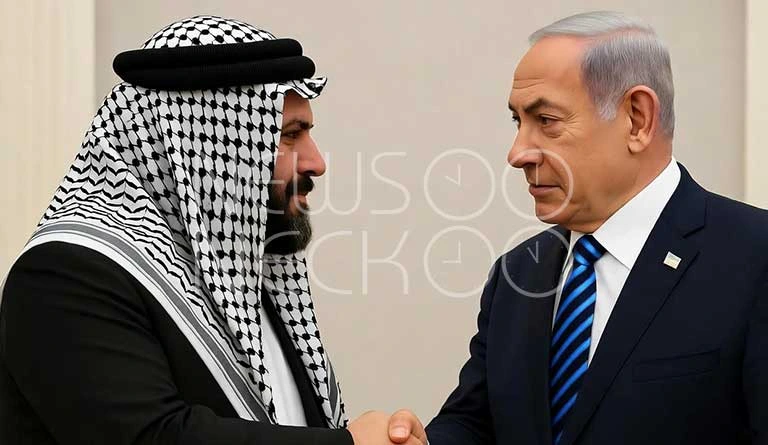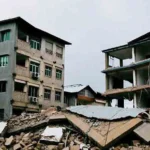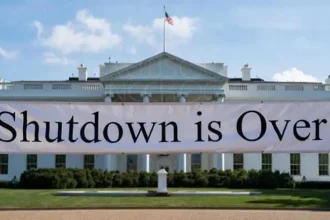Gaza Ceasefire Brings Hope and Heartbreak as Families Finally Return Home
For thousands of Palestinians, the fragile truce offers a first chance to see what remains of their lives
GAZA CITY — They walked north along broken roads, past the ghosts of their former lives. They carried sleeping children, plastic bags of belongings, and the quiet fear that the peace might not last.
For the first time in two years of war, tens of thousands of Palestinians began streaming back to Gaza City on Friday after a ceasefire agreement between Israel and Hamas took effect at noon. The delicate truce offers a glimpse of hope for a territory where children have known little but bombing, hunger, and loss.
The Israeli military announced it had pulled back to new deployment lines inside Gaza, beginning a 72-hour period during which Hamas must release all remaining hostages. In exchange, Israel will free hundreds of Palestinian prisoners.
But for the families making the long journey home, the politics mattered less than the simple, heartbreaking chance to see what remained of their homes, their neighborhoods, and their lives.
“We just want to see if our homes are still standing,” said Mousa Rajab, a 22-year-old nursing student who began walking north with his cousin as soon as they heard about the ceasefire. “We heard ours was partly damaged, but we have to see it with our own eyes”.
A Journey Through Ruins
The coastal road leading north from southern Gaza became a river of exhausted people on Friday. Some waved Palestinian flags. Others flashed victory signs. But mostly, they walked in silence, their faces marked by months of displacement and hunger.
Many appeared weak and malnourished. Those who could afford it paid high prices to hire donkey carts or small trucks. Most had no choice but to walk the 20-kilometer journey on foot, carrying what little they had left on their backs.
“I left my family behind and started walking north,” said Alaa Saleh, a schoolteacher who fled Gaza City with his wife and six children. “Thousands around me are struggling. Hiring a car costs around 4,000 shekels, far beyond what most people can afford”.
The ceasefire comes after nearly two years of conflict that has left at least 20,000 children dead – about 2% of Gaza’s child population – according to Save the Children. At least 42,000 more children have been injured, with 21,000 left permanently disabled.
“The Ceasefire Is a Critical Lifeline”
Even as families began their journeys home, UNICEF warned that child deaths could spike unless aid is allowed to flow freely into Gaza.
A UNICEF spokesperson Ricardo Pires said “The situation is critical,” . “We risk seeing a massive spike in child death, not only neonatal, but also infants, given their immune systems are more compromised than ever before”.
The agency noted that 132,000 children under five face risk of death from acute malnutrition, with at least 135 children already having starved to death . Seven newborn babies reportedly died from hypothermia in a single week because they lacked warm clothes, blankets, or shelter.
“The ceasefire is a critical lifeline for children across Gaza,” said Edouard Beigbeder, UNICEF Regional Director for the Middle East and North Africa. He warned that the stoppage of aid deliveries would quickly lead to “devastating consequences for children and families across Gaza who are struggling to survive”.
During earlier ceasefire periods, UNICEF and its partners were able to dramatically increase aid delivery—bringing in nearly 1,000 trucks with lifesaving supplies including clean water, medical supplies, vaccines, and therapeutic food.
The Agreement’s Delicate Terms
The ceasefire follows a U.S.-backed peace plan that has been the subject of negotiations in Egypt. Israeli Prime Minister Benjamin Netanyahu said the agreement would allow Israel to bring back the remaining hostages while maintaining its forces in Gaza.
“We are surrounding Hamas from every direction,” Netanyahu said in a recorded statement. “Hamas will be disarmed and Gaza will be demilitarized. If this is achieved the easy way, so much the better. If not, it will be done the hard way”.
Hamas, however, regards disarmament as tantamount to surrender and views armed struggle as legitimate resistance against Israeli control. The group’s head negotiator, Khalil al-Hayya, said they had received guarantees from the United States and mediators that the agreement means the war “has ended completely”.
The agreement authorizes the release of 250 Palestinian prisoners serving life sentences in Israel, plus 1,722 Gazans detained during the war who were not involved in the October 7, 2023 attacks.
A Fragile Hope
As the sun set on Gaza Friday, the sounds of bombing had been replaced by the footsteps of returning families. But the quiet felt fragile, and the destruction surrounding them served as a stark reminder of how much had been lost.
In Gaza City, where people once gathered at cafes along the seafront, there were now only tents and bombed buildings . Videos showed vast swathes of destruction in neighborhoods like Sheikh Radwan, Sabra, and Zeitoun, where entire apartment blocks had been leveled.
The United Nations plans to deliver 170,000 metric tons of food, medicine and other humanitarian aid, now that Israel has agreed to allow 600 aid trucks into Gaza daily . But after two years of trauma, the physical and emotional rebuilding will take far longer.
“Everything still feels uncertain,” said Mousa Rajab, the nursing student walking home. “Will they tell us to leave again? I hope not. I just want this to be the last time we walk this road”.
For the children of Gaza, who have learned to measure their lives in bomb blasts and hunger pains, the ceasefire offers a chance to rediscover what it means to be young. But with thousands orphaned, injured, or malnourished, the path to healing remains long and uncertain.
As one mother in Gaza told the BBC: “I hope the war ends and quickly.” She had given birth to her youngest son in late August, and prayed he would not grow up in a war zone.
For now, the guns are silent. The roads are filled with families walking toward what remains of home. And for the first time in two years, the people of Gaza dare to hope that the worst might finally be over.
This story was reported with contributions from journalists in Gaza, Jerusalem, and the United Nations.
Author: Junaid Arif
Date: 10 Oct, 2025
For More Updates, Visit: Newsneck













